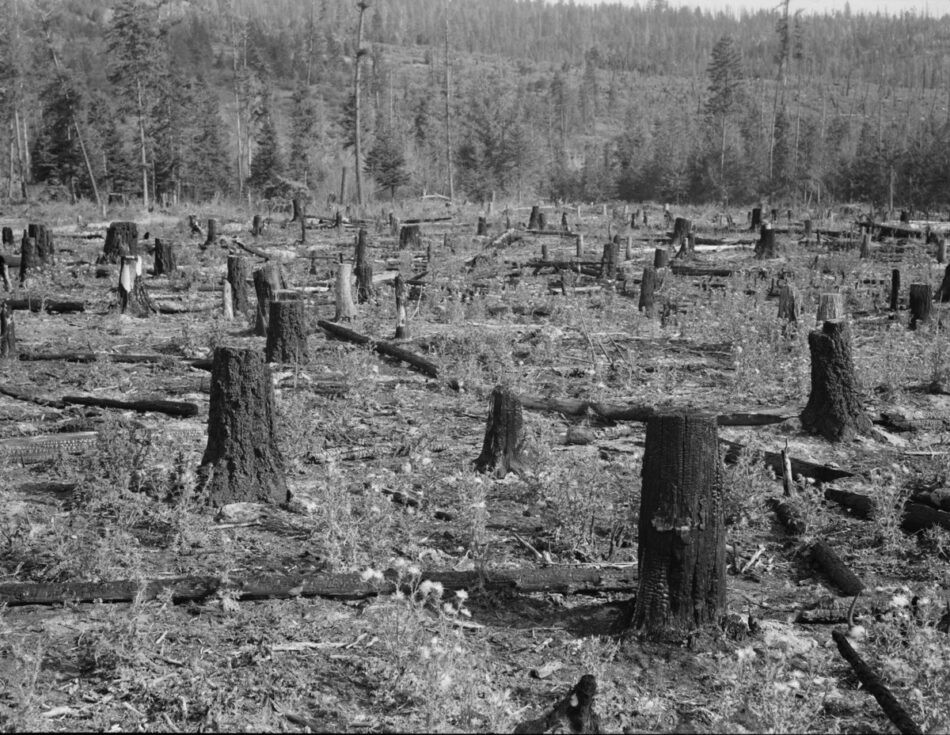The ubiquitous 2×4 is a cornerstone of modern construction. Yet, surprisingly, a 2×4 doesn’t actually measure two inches by four inches. This discrepancy between its name and actual dimensions results from a complex interplay of factors, including forestry practices, wood properties, transportation efficiency, construction techniques, and market competition. So, why are 2x4s not 2×4? Let’s delve into the historical evolution of this building material.
From Forest to Framing: The Shrinking 2×4
Before the industrialization of wood production in the late 19th century, lumber was sourced and milled locally. Trees were felled and cut to specific dimensions as needed, resulting in variations in size. As demand for lumber grew and forests were depleted near urban centers, timber harvesting shifted to more remote regions. This led to the rise of large-scale lumber operations and the transportation of lumber over long distances.
Part of uncleared land on farm, Boundary County, Idaho, 1939. Photo depicts the historical shift in lumber sourcing.
The Economics of Size: Shipping and Competition
Shipping costs played a significant role in the shrinking dimensions of lumber. Transporting heavier, thicker lumber was more expensive. Lumber producers began to favor thinner, lighter pieces to reduce these costs. Kiln drying, which removes moisture from the wood, further reduced weight and allowed for smaller finished dimensions.
Planks of wood for sale at a home-improvement store, 2007. Modern lumber yards highlight the standardized sizing of dimensional lumber.
Furthermore, competition between different wood species also contributed to the standardization of sizes. Southern yellow pine, for example, competed with western Douglas fir and other species. Establishing uniform sizing standards allowed for easier comparison and facilitated market transactions.
Standardization and the Modern 2×4
The early 20th century saw growing calls for standardization in lumber sizing and terminology. The American Lumber Congress of 1919 initiated this process, but it took decades to reach a consensus. World War II and the post-war housing boom further intensified the need for efficient lumber use and standardized dimensions.
By 1964, agreement was finally reached on nominal versus actual dimensions for lumber. The 2×4 was officially defined as 1½ inches thick by 3½ inches wide when dry. This represented a significant reduction in volume compared to the original, rough-sawn dimensions.
Defense houses under construction, Wheeler Dam Village, Lawrence, Alabama, 1941. The demand for housing influenced the standardization of lumber.
Rethinking the 2×4: Beyond Dimensional Lumber
While the current dimensions of the 2×4 are deeply ingrained in the construction industry, understanding their historical evolution encourages us to question their continued dominance. The 1½ x 3½ size is not inherently optimal for structural performance; rather, it is a product of economic and logistical considerations.
As we explore alternative construction methods using engineered wood products and innovative building systems, we have the opportunity to rethink the constraints imposed by the standard 2×4. This may lead to more sustainable and efficient building practices that better utilize forest resources and minimize waste.
